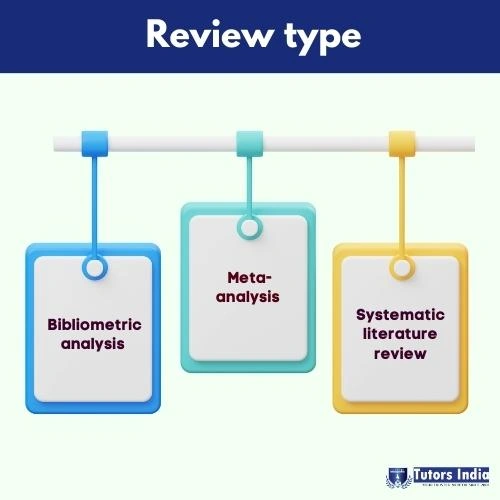Comparison of major review methods
Introduction
Knowledge generation in various disciplines is increasing tremendously but is fragmented and interdisciplinary in many scenarios. Therefore, there are challenges in analysing collective evidence and keeping up with the research trends. A building block of research is collecting information relevant to a specific discipline and relating it to existing knowledge, making reviews more critical (Sutton, 2019). The review article is a “significant evaluation of previously published preliminary studies.” These include, among others, systematic reviews and meta-analytic reviews of studies of quantitative effects. Articles are reviewed to identify and synthesise relevant literature carefully, comparing and contrasting the results of previous research in the field. Therefore, review articles provide readers with an up-to-date understanding of research topics, identify gaps, and point the way for future research. In other words, reviews synthesise the existing literature, summarise previous research, identify knowledge gaps, and develop new theoretical frameworks to form a series of crucial arguments on a particular research topic.
Reviews have become more diverse and practical with increasing diversity in research and practice. Each type of review has its benefits and must follow a ‘system’ while conducting it to answer a research question (Paul, 2020).
The types of major reviews

The following table summarises the types, scope, datasets, and analysis and where it can and cannot be conducted. This table can be used to guide the researcher, similar to how there are guidelines for a literature review.
| Review type | Goal | When to conduct | When not to conduct | Scope | Dataset | Analysis |
| Bibliometric analysis (Linnenluecke, 2020) |
Summarises large quantities of bibliometric data to present the state of the intellectual structure and emerging trends of a research topic or field. | It can be conducted when the scope of the review is broad. | It cannot be conducted when the dataset is small and manageable enough that its content can be manually reviewed. | Broad | Large | Quantitative (evaluation and interpretation) |
| Qualitative (interpretation only) | ||||||
| Meta-analysis (Hansen, 2022) |
Summarises the empirical evidence of the relationship between variables while uncovering relationships not studied in existing studies. | Meta-analysis can be conducted when the review focuses on summarising results. | It cannot be conducted when studies in the field are heterogeneous. | Broad/Specific | Large/ small but adequate | Quantitative (evaluation and interpretation) |
| It can also be conducted when studies in the field are homogenous. | Meta-analysis cannot be conducted when the number of high-quality homogeneous studies is relatively low. | |||||
| Systematic literature review (Linnenluecke, 2020) |
Summarises and synthesises the findings of existing literature on a research topic or field. | A systematic literature review can be conducted when the scope of the review is specific. | It cannot be conducted when the dataset is too large for manual review. | Specific | Small | Qualitative (evaluation and interpretation) |
| It can be conducted when the dataset is small and manageable enough to review its content manually. | It cannot be conducted when the scope of the review is broad. | Large |
Conclusion
Review types help researchers to understand the amount of existing knowledge. Bibliometric analysis, meta-analysis and systematic literature review are the major review types. Each type of review could be used in some instances. The researcher needs to be aware of the review types,their indications and where they cannot be used to gain accurate knowledge in the process.
Tutors India assists students with reviews like literature reviews and systematic reviews, which are a crucial part of their curriculum. The team members are alumni from prestigious institutions who are well-versed in the review methodology and referencing. They ensure the work aligns with the university guidelines and is error-free and delivered on time.
References
- Sutton, A., Clowes, M., Preston, L., & Booth, A. (2019). Meeting the review family: Exploring review types and associated information retrieval requirements. Health Information & Libraries Journal, 36(3), 202–222.
- Paul, J., & Criado, A. R. (2020). The Art of Writing Literature Review: What do we know and what do we need to know? International Business Review, 29(4), 101717.
- Linnenluecke, M. K., Marrone, M., & Singh, A. K. (2020). Conducting systematic literature reviews and bibliometric analyses. Australian Journal of Management, 45(2), 175–194.
- Hansen, C., Steinmetz, H. & Block, J. How to conduct a meta-analysis in eight steps: a practical guide. Manag Rev Q 72, 1–19 (2022).
